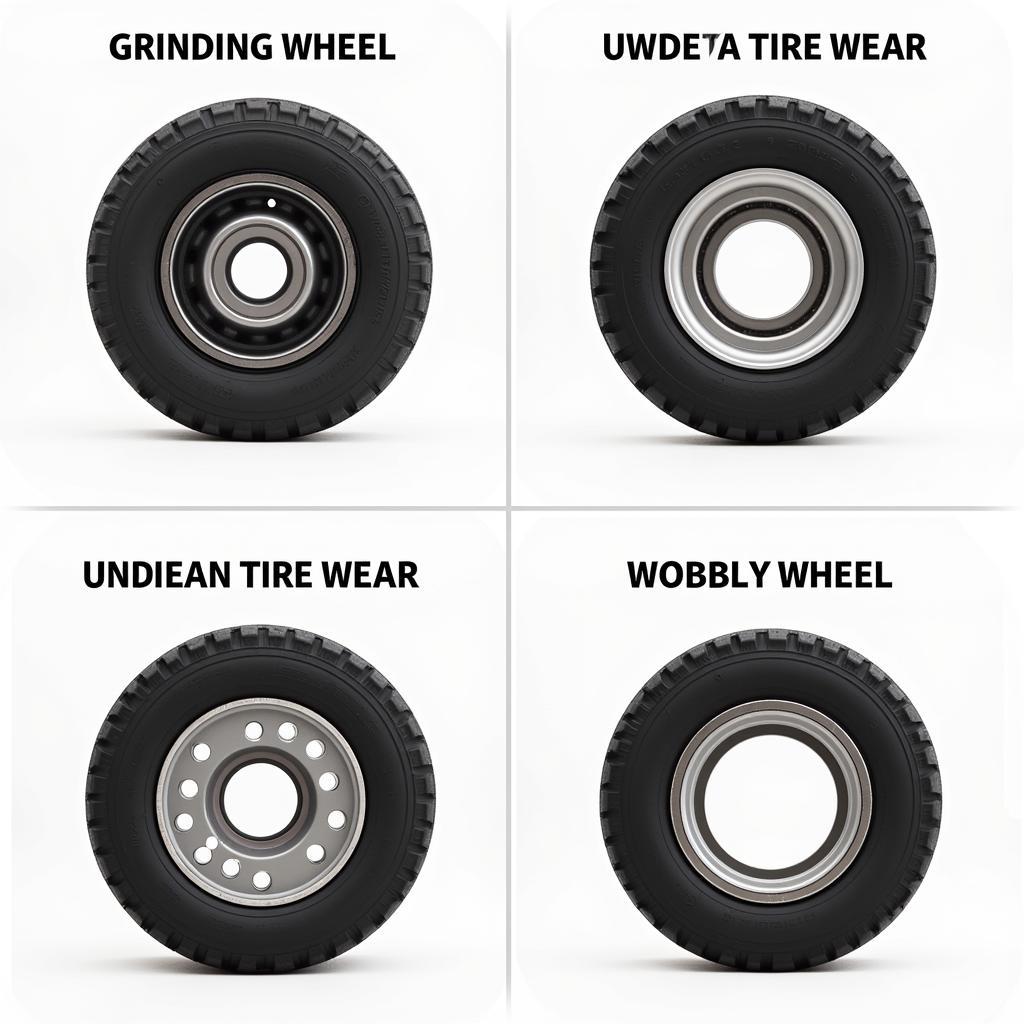Is greasing wheel bearings part of maintenance on a car? Absolutely! It’s a critical, often overlooked, aspect of car maintenance that significantly impacts safety and performance. Neglecting this simple task can lead to costly repairs and even dangerous driving situations. This article dives deep into the importance of greasing wheel bearings, how to do it yourself, and when to seek professional help.
Why are Greased Wheel Bearings So Important?
Wheel bearings are the unsung heroes that allow your wheels to spin freely with minimal friction. They endure tremendous pressure and heat, especially during high-speed driving or when carrying heavy loads. Grease acts as a vital protective barrier, reducing friction, dissipating heat, and preventing corrosion. Without proper lubrication, these hardworking components can wear out prematurely, leading to a host of problems.
- Reduced Friction: Grease creates a slippery film between the moving parts of the bearing, minimizing friction and wear.
- Heat Dissipation: Grease helps to draw heat away from the bearings, preventing overheating and damage.
- Corrosion Protection: Grease seals out moisture and contaminants that can cause corrosion and rust.
 Greasing Wheel Bearings Process
Greasing Wheel Bearings Process
How Often Should You Grease Wheel Bearings?
The frequency of greasing wheel bearings depends on several factors, including your driving habits, the type of vehicle you drive, and the manufacturer’s recommendations. As a general rule, it’s a good idea to grease your wheel bearings every 30,000 to 50,000 miles. However, if you frequently drive in harsh conditions, such as off-roading or in extremely hot or cold weather, you may need to grease them more often. Always consult your owner’s manual for specific recommendations for your vehicle.
Is Greasing Wheel Bearings Difficult?
While it’s possible to grease wheel bearings yourself, it’s a moderately complex task that requires some mechanical knowledge and specialized tools. If you’re not comfortable working on your car, it’s best to leave this job to a qualified mechanic.
DIY Greasing: A Step-by-Step Guide
If you’re mechanically inclined, here’s a general overview of the process:
- Gather your tools: You’ll need a jack, jack stands, lug wrench, grease gun, appropriate grease, new cotter pins, and a few other basic hand tools.
- Remove the wheel: Safely lift the vehicle and secure it with jack stands. Remove the wheel and tire assembly.
- Disassemble the brake components: Carefully remove the brake caliper, rotor, and hub assembly.
- Clean the bearings: Thoroughly clean the bearings with a solvent and allow them to dry completely.
- Pack the bearings with grease: Use a grease gun to pack the bearings with fresh grease. Ensure they are completely filled.
- Reassemble everything: Reinstall the hub assembly, brake components, and wheel.
- Repeat for the other wheels.
“Properly greased wheel bearings are essential for safe and efficient driving,” says John Davis, Senior Automotive Technician at Davis Auto Repair. “It’s a small investment that can save you a lot of money and headaches down the road.”
Signs of Bad Wheel Bearings
Ignoring your wheel bearings can lead to serious problems. Here are some common signs of bad wheel bearings:
- Grinding or humming noise: This is the most common symptom of a failing wheel bearing. The noise may get louder as you accelerate.
- Wobbly wheels: If your wheels feel loose or wobbly, it could be a sign that the bearings are worn out.
- Uneven tire wear: Bad wheel bearings can cause uneven tire wear.
- Vibration in the steering wheel: You may feel a vibration in the steering wheel, especially at higher speeds.
 Bad Wheel Bearing Symptoms
Bad Wheel Bearing Symptoms
“Don’t ignore unusual noises or vibrations,” warns Maria Sanchez, Lead Mechanic at Sanchez Automotive. “Addressing these issues early can prevent more extensive damage.”
Conclusion
Is Greasing Wheel Beatings Part Of Maintenance On A Car? Yes, it is. Regular maintenance, including greasing your wheel bearings, is crucial for ensuring the longevity and safety of your vehicle. While it’s a task you can potentially tackle yourself, don’t hesitate to seek professional help if you’re unsure. Remember, a little preventative maintenance can save you a lot of trouble in the long run. Need expert advice? Connect with us at AutoTipPro. Call us at +1 (641) 206-8880 or visit our office at 500 N St Mary’s St, San Antonio, TX 78205, United States.
FAQ
- What type of grease should I use for wheel bearings? High-temperature wheel bearing grease is recommended.
- Can I over-grease wheel bearings? Yes, over-greasing can cause problems. Follow the manufacturer’s recommendations.
- How long do wheel bearings typically last? Wheel bearings can last anywhere from 75,000 to 100,000 miles or more with proper maintenance.
- What happens if a wheel bearing fails completely? A complete wheel bearing failure can cause the wheel to lock up, leading to a loss of control of the vehicle.
- How much does it cost to replace a wheel bearing? The cost can vary depending on the vehicle, but it typically ranges from $200 to $400 per wheel.
- Can I drive with a bad wheel bearing? It’s not recommended to drive with a bad wheel bearing. It can be dangerous.
- How can I tell if my wheel bearings need to be greased? If you hear a grinding or humming noise coming from the wheels, it’s likely time to grease or replace the bearings.






Leave a Reply